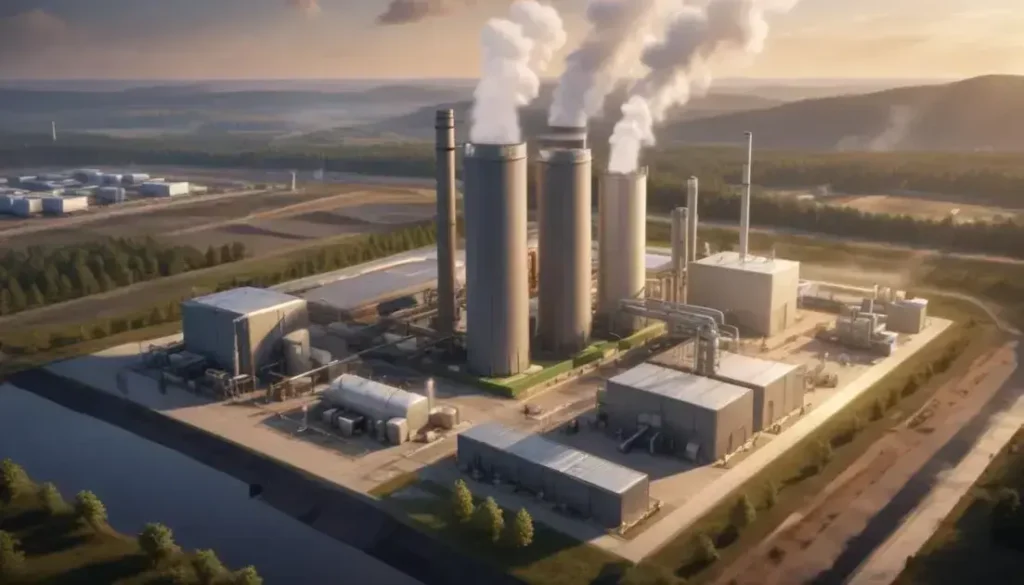Decarbonisation involves reducing carbon emissions through collaborative efforts, integrating technology, adopting circular economy principles, and implementing effective policies, ultimately aiming for a sustainable low-carbon economy.
As we delve into global decarbonisation strategies, it’s essential to understand how these approaches are reshaping our businesses and communities.
Understanding global decarbonisation strategies
Global decarbonisation strategies are critical for addressing climate change and fostering sustainable development. Countries and industries around the world are recognising the need to reduce carbon emissions to meet net-zero targets. These strategies involve a combination of policy measures, technological advances, and behavioural changes.
Importantly, governments are implementing robust regulations and incentives to promote the transition towards cleaner energy sources. For example, carbon pricing and renewable energy subsidies are common tools being used to encourage businesses to adopt sustainable practices. This not only helps in reducing emissions but also drives innovation within the green technology sector.
In addition to government actions, businesses play a vital role in implementing decarbonisation strategies. By integrating sustainability into their core operations, companies can not only minimise their environmental impact but also enhance their competitive advantage. This may involve investing in renewable energy, improving energy efficiency, and adopting circular economy principles.
The collaboration between industries is also essential. Partnerships between public and private sectors can help share knowledge, resources, and technologies, creating a pathway for broader implementation of effective decarbonisation measures.
The importance of collaboration between sectors
The importance of collaboration between sectors cannot be overstated in the quest for effective decarbonisation. Different industries bring unique strengths and insights, enabling innovative solutions to emerge when they work together. For instance, energy companies can share their advancements in renewable technologies with manufacturers to improve efficiencies and reduce carbon footprints.
Moreover, cross-sector collaboration fosters a more holistic approach to tackling environmental challenges. When sectors unite, they can combine resources and expertise to tackle issues like waste management and emissions reduction more effectively. An example is the partnership between the agriculture and technology sectors in developing precision farming techniques that optimise crop yields while minimising resource use.
Additionally, collaborative efforts often lead to innovative policy frameworks that support sustainability goals. By identifying common interests and objectives, sectors can advocate for regulations that promote green initiatives, benefiting the environment and the economy simultaneously.
Ultimately, the synergy created through collaborative approaches not only drives decarbonisation efforts forward but also enhances resilience against the impacts of climate change. It encourages knowledge sharing across sectors, leading to a shared vision for a more sustainable future.
Key innovations in the decarbonisation space
Key innovations in the decarbonisation space are transforming how industries approach sustainability. Among these, carbon capture and storage (CCS) technologies have gained significant traction. CCS allows industries to capture carbon dioxide emissions at their source and store them underground, preventing them from entering the atmosphere.
Another promising area is the development of green hydrogen. Produced using renewable energy sources, green hydrogen offers a clean alternative to fossil fuels in various sectors, including heavy transport and manufacturing. This innovation supports a much-needed transition away from carbon-intensive energy systems.
Furthermore, advancements in energy storage technologies, such as batteries and thermal storage, are crucial for integrating renewable energy into the grid. These innovations enable better energy management and stability, making it easier to rely on intermittent sources like solar and wind.
Smart grid technologies are also playing a role in decarbonisation. By optimising energy distribution and consumption, smart grids enhance efficiency while integrating renewable energy sources effectively. Through data analytics and automation, these systems can help predict energy demands and reduce waste.
Panel insights from industry leaders
Panel insights from industry leaders are invaluable for understanding the complex landscape of decarbonisation. Experts from various sectors gather to share their experiences and perspectives on effective strategies. These discussions often highlight the best practices and challenges that arise during the transition to sustainable practices.
One common theme is the need for collaboration. Industry leaders stress that working together across sectors is crucial for achieving meaningful results in reducing carbon footprints. Insights suggest that partnerships can amplify the impact of initiatives, enabling companies to share resources and technologies.
Furthermore, leaders advocate for the importance of innovation in overcoming barriers. Sharing success stories about cutting-edge technologies provides motivation and actionable advice for others looking to innovate in their own processes. For instance, many leaders are embracing data analytics to identify inefficiencies and inform sustainable practices.
Another critical insight involves regulatory frameworks. Industry leaders discuss how clear policies can facilitate the transition by providing structure and incentives. They emphasise the role of government in supporting businesses through grants and subsidies aimed at encouraging sustainable investment.
Decarbonisation and its impacts on value chains
Decarbonisation profoundly affects value chains across various industries. By shifting towards more sustainable practices, businesses are not only mitigating their environmental impact but also enhancing their operational efficiencies. The journey to decarbonisation often begins with a thorough assessment of existing processes to identify areas where emissions can be reduced.
A critical aspect of this transformation involves supply chain management. Companies are increasingly scrutinising their suppliers to ensure that sustainability standards are met throughout the value chain. This can lead to more eco-friendly sourcing of materials and components, significantly reducing the carbon footprint of the final product.
Furthermore, decarbonisation encourages the adoption of new technologies. Businesses that invest in cleaner technologies and renewable energy sources often see cost savings in the long run. These innovations not only reduce emissions but also enhance product quality and consumer satisfaction.
Another impact of decarbonisation on value chains is the shift in consumer preferences. Today’s consumers are more environmentally conscious and prefer products from companies that prioritise sustainability. This demand drives businesses to adapt their practices, leading to a competitive advantage in the market.
Exploring regional strategies in decarbonisation
Exploring regional strategies in decarbonisation reveals how different areas are tailoring their approaches to meet local needs and environmental conditions. Regions are recognising that a one-size-fits-all solution is ineffective; hence, they are devising strategies that reflect their unique resources and challenges. For instance, coastal regions may focus heavily on developing offshore wind farms, leveraging their natural wind patterns.
On the other hand, agricultural areas could prioritise carbon farming techniques, which enhance soil health while reducing emissions. These methods enable farmers to capture carbon in the soil, contributing significantly to local and national decarbonisation goals.
Collaboration between regional governments and local businesses is crucial in these strategies. Stakeholders are encouraged to engage in dialogue to explore innovative solutions. Regional authorities often provide funding and incentives for projects aimed at reducing carbon footprints, fostering a supportive environment for sustainable practices.
Furthermore, education and community involvement play a vital role. Empowering local populations with knowledge about sustainability initiatives ensures broader participation in decarbonisation efforts. Initiatives such as workshops and training programmes create awareness and encourage behaviour change across communities.
The role of technology in achieving net zero
The role of technology in achieving net zero emissions is critical as industries seek to minimise their carbon footprints. Innovative technological solutions are emerging that significantly impact how organisations operate and reduce their greenhouse gas emissions. For example, advancements in renewable energy technologies, such as solar, wind, and hydroelectric power, are providing cleaner alternatives to fossil fuels.
Energy efficiency is another area where technology makes a substantial difference. Smart grid systems and energy management software allow companies to monitor and optimise their energy use in real-time. These tools help reduce waste and improve operational efficiency, contributing to lower emissions.
Furthermore, innovations in carbon capture and storage (CCS) technology are gaining attention. By capturing carbon dioxide emissions before they are released into the atmosphere, CCS presents a viable way to offset emissions from hard-to-abate sectors like cement and steel production.
Data analytics and artificial intelligence (AI) also play an essential role in identifying patterns and optimising processes. These technologies enable businesses to make informed decisions that enhance sustainability efforts while improving profitability. In summary, embracing technology is vital for organisations aiming to meet their net zero targets.
Insights on policy alignment and investment
Insights on policy alignment and investment reveal how cohesive regulation can drive decarbonisation efforts. Effective policies provide a framework for industries to meet sustainability goals while attracting investments in clean technologies. Governments play a pivotal role by establishing clear guidelines that incentivise both businesses and investors to prioritise sustainability.
Policy frameworks such as carbon pricing, renewable energy targets, and emissions reduction commitments encourage companies to innovate. When companies know what is expected, they are more likely to allocate resources towards developing solutions that align with these goals. This enables the creation of market conditions favourable to investing in green technologies.
Investment also flows more readily when regions demonstrate a commitment to sustainability. By aligning local policies with national and international targets, areas can attract significant funding from environmentally-focused investors. These investments not only help in the transition to a low-carbon economy but also stimulate job creation and economic growth.
Moreover, active engagement with stakeholders, including industry players and community groups, ensures that policies are practical and effective. Collaborative approaches allow for a better understanding of challenges and opportunities, leading to well-informed decisions that support long-term sustainability.
Future trends in climate strategy
Future trends in climate strategy indicate a significant shift towards more integrated and technology-driven approaches. As the urgency to address climate change intensifies, governments and businesses are focusing on sustainability as a core component of their operations. This involves not just compliance with regulations but also proactive measures to reduce carbon footprints and enhance resilience.
One prominent trend is the growing importance of circular economy principles. Instead of traditional linear models that rely on ‘take-make-dispose’, organisations are adopting practices that promote recycling, reusing, and reducing waste. Companies are increasingly designing products with their end-of-life in mind, aiming for minimal impact on the environment.
Technological advancements are also transforming climate strategies. Innovations like artificial intelligence and big data analytics enable better decision-making by providing insights into energy use patterns and emissions. These tools help organisations identify inefficiencies and develop targeted interventions to improve sustainability.
Furthermore, collaboration across sectors is expected to strengthen. Stakeholders from public and private sectors are coming together to share knowledge and resources. This collective approach not only enhances innovation but also accelerates the implementation of effective climate strategies.
In conclusion, understanding decarbonisation is essential.
As various sectors work towards achieving net zero emissions, the importance of collaboration between industries, technological innovation, and effective policy alignment cannot be overlooked. Embracing sustainable practices benefits not only the environment but also creates economic opportunities for businesses.
Future trends show that a blend of strategies, such as adopting circular economy principles and leveraging advanced technologies, will guide organisations in their climate strategies. By taking action now, companies can position themselves for success in a greener, more sustainable future.
Ultimately, decarbonisation is not just a trend; it is a necessary path towards a healthier planet and a more sustainable economy. Everyone has a role to play in this journey.
Frequently Asked Questions
What is decarbonisation?
Decarbonisation is the process of reducing carbon dioxide emissions associated with fossil fuel use, aiming for a low-carbon economy.
Why is collaboration important in decarbonisation efforts?
Collaboration allows different sectors to share resources and knowledge, enhancing the impact of sustainability initiatives and accelerating progress.
How does technology contribute to achieving net zero emissions?
Technology helps by improving energy efficiency, enabling renewable energy use, and providing tools for monitoring and analysing carbon emissions.
What role do policies play in decarbonisation?
Effective policies set clear guidelines and incentives that direct businesses towards sustainable practices and attract investments in green technologies.
How can businesses integrate circular economy principles?
Businesses can adopt circular economy practices by designing products for longevity, promoting recycling, and minimising waste throughout their operations.
What are future trends in climate strategy?
Future trends include increased reliance on technology, circular economy approaches, and enhanced collaboration across sectors to achieve sustainability goals.


